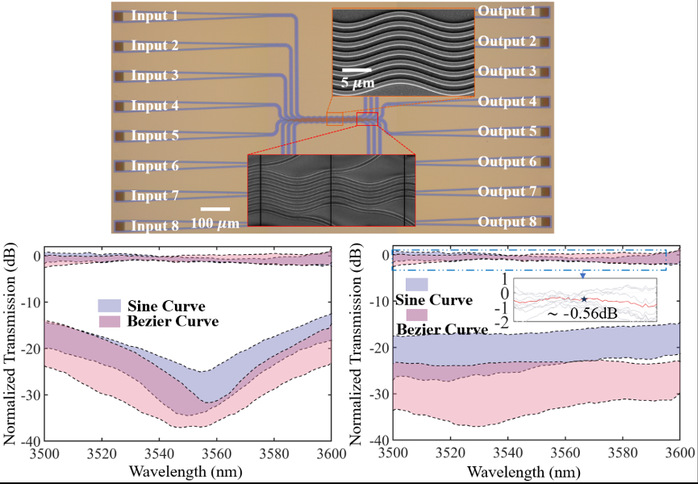The mid-infrared (MIR) band shows significant promise in various fields, including thermal imaging, spectroscopy sensing, infrared countermeasures, and free-space communication, due to its distinctive characteristics. Despite substantial efforts to develop on-chip photonic integrated circuits for MIR applications, which aim to miniaturize systems and expand their application scopes, the challenge of crosstalk among closely packed waveguides continues to hinder improvements in integration density and device performance.
Recently, a research group led by Assistant Professor Zou Yi from the School of Information Science and Technology at ShanghaiTech experimentally demonstrated a morphology engineering approach to control coupling and suppress crosstalk in densely arranged waveguide arrays. Their findings, published in a paper titled “Morphology Engineering Enabled Mid-Infrared Ultra-Dense Waveguide Array with Low Crosstalk” in Laser & Photonics Reviews, indicate that introducing a periodic Bezier curve to modify the waveguide trajectory can effectively disrupt coherent coupling, isolating individual waveguides and minimizing crosstalk within the array (See Figure 1).
In the study, the team demonstrated an eight-channel waveguide array with a half-wavelength pitch operating at 3.55 µm, achieving crosstalk suppression of over -29 dB—an 8 dB improvement compared to a sinusoidal trajectory. This method, which allows for precise control of on-chip light guiding, coupling, and routing, provides a promising avenue for high-density design in photonic integrated circuits in the MIR region.

Figure 1. (Left) The 3D schematic of the periodical curved waveguide array. (Right) The relationship between the coupling coefficient variation factor em and lm for different Bezier curves.

Figure 2. (Top) The microscope and SEM images of the Bezier-curved modulated waveguide array. (Bottom) Measured transmission from (left) the FNW and (right) the SNW for the Bezier curve and sine curve modulated 8 × 8 waveguide array. The purple and pink regions represent the sets of transmission spectra for the sine curve and Bezier curve, respectively.
PhD candidate Li Ting and master’s student Zhang Hong are co-first authors of the paper. Prof. Zou Yi and Prof. Xu Xiaochuan from Harbin Institute of Technology, Shenzhen are the co-corresponding authors.
*This article is provided by Prof. Zou Yi

